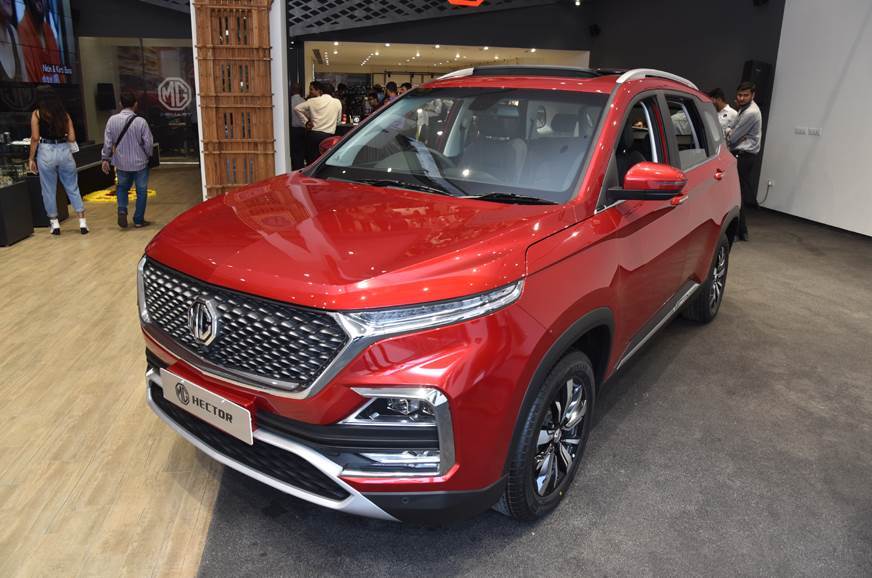For its sheer versatility and value for money, the first-gen Maruti Suzuki Ertiga set off to a flying start when it launched in 2012. Over the years, however, its sales witnessed a few troughs due to the shift in buyer preferences towards other segments like compact sedans, premium hatchbacks and SUVs. Despite that, this seven-seater from Maruti soldiered along with steady sales (a major contributor being the taxi market), and even towards the end of its life cycle it averaged over 3,500 units per month, which is quite respectable. But now, there’s an all-new, second-generation Ertiga, and if initial impressions are anything to go by, this one is far more desirable and a much better package than the one it replaces.
Built on an all-new platform, the second-gen Ertiga is larger in every dimension, and, as a result, is more spacious than before. It comes with two engine options – an all-new 105hp, 1,462cc petrol, and the tried and tested 90hp, 1,248cc Fiat-sourced diesel. Both engines are mated to 5-speed manual transmissions, with the petrol also getting a 4-speed automatic in the form of a traditional torque converter. A petrol-CNG and an all-new in-house developed 95hp, 1,498cc diesel engine are likely to join the range soon.
The petrol Ertiga’s pricing is very aggressive at Rs 7.44-9.50 lakh for the manual and Rs 9.18-9.95 lakh for the automatic. And at this price point in the rather uncrowded MPV market, it doesn’t have any direct competitor. At Rs 8.84-10.90 lakh, the diesel-manual is a bit pricey, especially considering the Rs 1.40 lakh premium it commands over the petrol but it still undercuts its core rivals – Mahindra Marazzo (Rs 9.99-14.38 lakh) and Renault Lodgy (Rs 8.63-12.12 lakh) by a significant margin. So it is still a value-for-money proposition, but what’s improved from the first-gen model? We put it through our thorough test to find out.
Maruti’s covered all the essentials with the Ertiga. So it gets ABS with EBD, dual airbags, speed-sensing door locks, child seat mounts (middle row), and rear parking sensors right from the base variant, and even projector headlamps, 50:50 split recline third row and a 60:40 split middle row, power windows and central locking are standard across the range. As you go higher up, it gets kit like electric-folding mirrors, 15-inch alloys, steering-mounted controls, rear wiper and washer and automatic climate control, among others. The top spec gets a touchscreen with Android Auto and Apple CarPlay, and a reversing camera. The petrol-automatic isn’t available in the top-spec, but what it gets is ESP and hill-hold assist.
The Ertiga could have done with some more kit like cruise control, LED DRLs, larger wheels and wider tyres, rain-sensing wipers and rear sun-blinds, all of which its direct competitor, the Marazzo, gets. However, factor in its aggressive price tag and Maruti can be excused for the missing kit.
The 7.0-inch SmartPlay infotainment system is equipped with SD card-based navigation, Mirrorlink, Android Auto and Apple CarPlay. This system is easy to use, and the display is crisp with sharp contrasts. The system’s software lags at times and its slow responses can get annoying while on the move. While the menu buttons on the sides are touch-operated too, the volume rocker isn’t the most convenient to use. Voice commands are available, and are quite accurate most of the time. Sound quality from the 6-speaker setup (four speakers and two front tweeters) is quite decent. The camera engages with a small delay, when the car’s put in reverse.
Maruti has nailed it with the new Ertiga’s clever packaging. Despite being a seven-seater, it is still compact in dimensions, and its light controls and good all-round visibility make it very user-friendly and easy to drive. The interiors are more spacious and feel plusher, and the well-cushioned seats take cabin comfort up a few notches. What’s more is that the larger cabin and the backrest recline function has made the third row far more usable now. The new petrol engine is smooth, refined and performance is adequate, and paired to the manual, it’s our pick from the range; the automatic is heavy sipper in the city, while the 1.3-litre diesel, although easier to drive (than before) and very efficient, feels a bit crude. The Ertiga does miss some features but its pricing is so aggressive, you just can’t argue with its value proposition. At the end of the day, this isn’t an exciting car that’ll tug at your heartstrings, but it is one that’s very practical and delivers all that’s expected of it and rather competently. So when it comes to fitness for purpose, the Ertiga passes with flying colours, and it’s for this very reason it was our Car of the Year 2019.
from Autocar India https://ift.tt/2SvU4y2
via IFTTT

No comments:
Post a Comment